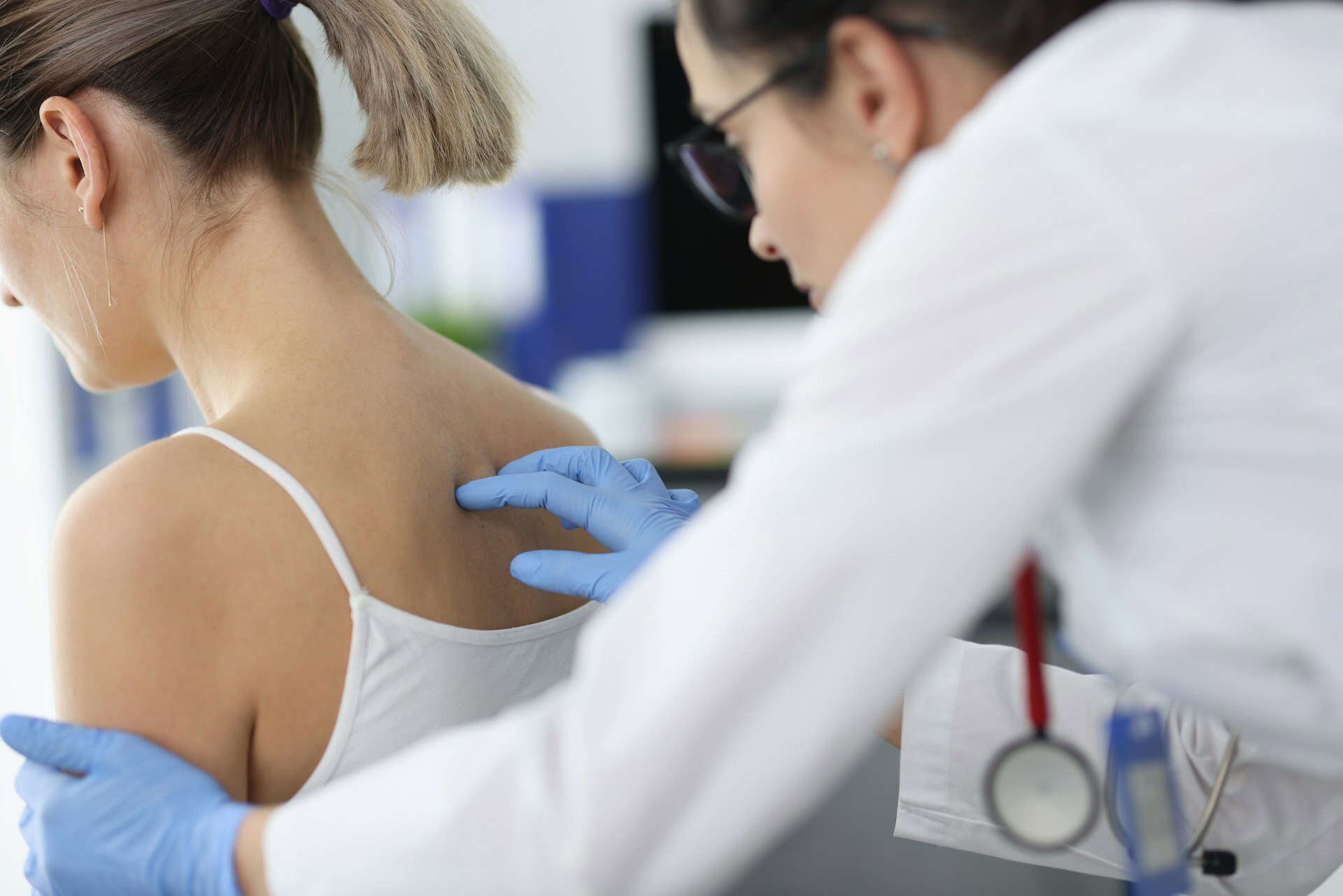Scoliosis is a medical condition characterized by an abnormal lateral curvature of the spine. It often develops during the growth spurt before puberty and can range from mild to severe. Understanding the symptoms, causes, and treatment options for scoliosis is essential for managing this condition and maintaining a healthy spine.
Symptoms of Scoliosis
Scoliosis can present with various symptoms, depending on the severity of the curvature and the age of the individual. Common symptoms include:
- Visible Curvature: An observable curve in the spine, often appearing as an “S” or “C” shape.
- Uneven Shoulders: One shoulder may appear higher than the other.
- Asymmetrical Waist: One side of the waist may be more pronounced or higher.
- Uneven Hips: One hip may appear higher or more prominent than the other.
- Rib Hump: A protrusion or hump on one side of the ribcage, especially noticeable when bending forward.
- Back Pain: Mild to severe back pain, which can be more common in adults with scoliosis.
- Fatigue: Muscle fatigue, particularly after long periods of sitting or standing.
- Breathing Difficulties: In severe cases, the curvature of the spine can affect lung function, leading to difficulty breathing.
Causes of Scoliosis
The exact cause of scoliosis is often unknown, but several factors can contribute to its development:
- Idiopathic Scoliosis: The most common type, with no identifiable cause, often developing during adolescence.
- Congenital Scoliosis: Caused by abnormal spinal development in the womb, leading to spinal deformities.
- Neuromuscular Scoliosis: Resulting from neurological or muscular conditions such as cerebral palsy or muscular dystrophy.
- Degenerative Scoliosis: Occurs in adults due to the degeneration of spinal discs and joints.
- Genetic Factors: A family history of scoliosis can increase the risk of developing the condition.
Treatment Options for Scoliosis
The treatment for scoliosis depends on the severity of the curve and the age of the patient. Common treatment options include:
- Observation: Regular monitoring of the spinal curve with X-rays, particularly in children and adolescents who are still growing.
- Bracing: Wearing a brace can help prevent the progression of the spinal curve in growing children and adolescents. It is typically recommended for moderate curves.
- Physical Therapy: Exercises to improve posture, flexibility, and muscle strength can help manage symptoms and improve quality of life.
- Pain Management: Over-the-counter pain relievers, physical therapy, and alternative therapies such as acupuncture can help manage pain associated with scoliosis.
- Surgery: In severe cases, surgical intervention, such as spinal fusion, may be necessary to correct the curvature and prevent further progression. Surgery is usually considered when the curve is greater than 45-50 degrees and is causing significant pain or breathing difficulties.
Prevention Tips
While scoliosis cannot always be prevented, certain practices can help maintain a healthy spine and reduce the risk of complications:
- Regular Exercise: Engage in activities that strengthen the core muscles, improve posture, and enhance overall spinal health.
- Maintain Good Posture: Practice proper posture when sitting, standing, and walking to reduce strain on the spine.
- Healthy Diet: Ensure a balanced diet rich in calcium and vitamin D to support bone health.
- Regular Check-Ups: Routine medical check-ups can help detect scoliosis early, allowing for timely intervention.
- Ergonomic Workstation: Set up an ergonomic workspace to promote good posture and reduce strain on the spine.
Conclusion
Scoliosis is a condition that can significantly impact daily life, but with early detection and appropriate treatment, individuals can manage their symptoms and maintain a good quality of life. If you or a loved one experience symptoms of scoliosis, it is essential to consult a healthcare professional for a proper diagnosis and tailored treatment plan. Through proactive management and healthy lifestyle choices, those with scoliosis can lead active and fulfilling lives.





